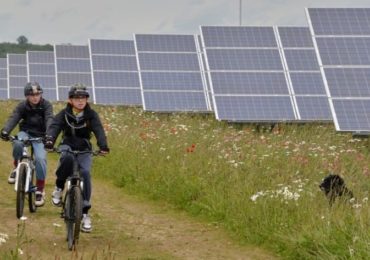Solar power growth exceeded industry expectation with 50 percent worldwide growth in 2016 and the United States may be pivoting to keep pace.
Much of the exponential growth can be attributed to a sun rush by the U.S. and China as a solar photovoltaic capacity enjoyed a bump to hit the 76-gigawatt mark, a staggering increase over 2015’s 50 gigawatts worth of installations. Both the U.S. and China literally doubled solar additions and pushed the world’s solar power capacity to 305 gigawatts. Considering the leap from nearly nothing at the turn of the century to only 50 gigawatts in 2010, solar power is a force to be reckoned with going forward.
Solar Growth Drivers
Although the International Energy Agency (IEA) projected that global solar growth would top out at 50 gigawatts per year and level off in 2017, the industry has surprised some experts by picking up steam. China and the United States have managed to pull much of the world forward due to promising incentives, initiatives and cost reductions.
In the U.S., the solar market doubled Solar PV installations to the tune of 14,626 megawatts and ranked No. 1 in terms of new electricity generation. Solar moved up to capture 39 percent of new energy additions across the board. Much of the solar advancements in 2016 can be attributed to industry forces sprinting forward with utility-scale projects against potentially expiring federal Investment Tax Credits. This sector contributed 145 percent growth, the highest of any segment. It was also the first time that non-residential investment exceeded residential.

But residential solar growth in the U.S. did not slouch. The sector posted a formidable 2,583 megawatts and several emerging solar states picked up the pace. All told, the residential segment enjoyed a bountiful 19 percent growth and the country has 1.3 million solar PV installations in place.
China’s clean energy initiatives made it the world’s largest solar investor in 2016. Chinese policy makers upped the number of solar installations on government buildings, schools and even malls in an effort to place panels in close proximity to electricity use. After a record-setting 2016, China added another 24 gigawatts of capacity at the halfway mark of 2017.
The Asian giant and other country’s mass production of solar panels has significantly driven down the cost of solar power generating systems. According to the Solar Energy Industries Association, cost has dipped by an astonishing 67 percent since 2011. With the price tag no longer being prohibitive to homeowners, further residential growth is likely to exponentially exceed predictions as individuals move away from the grid and fossil fuel energy.
U.S. Solar Jobs On The Rise
The United States now has more than 260,000 people working in the solar sector, an increase of nearly 25 percent over last year, according to the National Solar Jobs Census. In contrast, the U.S. Department of Energy reported that fossil fuel employment now lags behind renewables at about 187,000 at energy plants. A recent U.S. jobs report projects an expected 10-percent bump in 2017 solar jobs. Employment in the industry is outpacing the overall economy by a remarkable factor of 17. If the U.S. is to keep up with other industrial countries, solar represents a major employment growth sector that will continue to be an economic tipping point.

European Solar Expansions
European leaders have made commitment to curb C02 emissions by entering the Paris agreement and solar will be at the forefront of their efforts. In the UK, last year’s installation numbers dipped as a result of reduced homeowner incentives for retrofitting solar panels and systems. The UK also cut incentives for large solar farms. But that isn’t overly bad news. Even with slowed growth, the UK still led Europe with a smart 29 percent new capacity growth. Germany and France came in second and third at 21 and 8.3 percent, respectively.
The slowed growth stirred industry leaders to call upon officials to vigorously support solar incentives to meet climate change and the Paris initiative. SolarPower Europe energy director Alexandre Roesch called for a 2030 target of 35 percent overall solar and renewable energy, an increase of the previously proposed 27 percent. Expectations are that European solar will get a jumpstart in the near future.
With environmental policy, economic growth and job opportunities surging, the future of the solar sector is likely to exceed projections in the U.S. and abroad in the upcoming years.